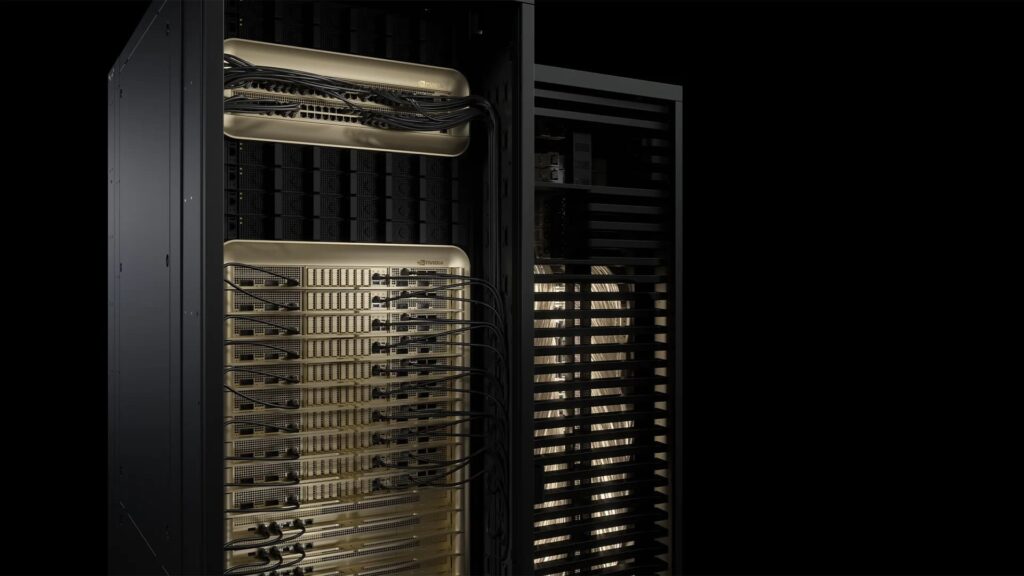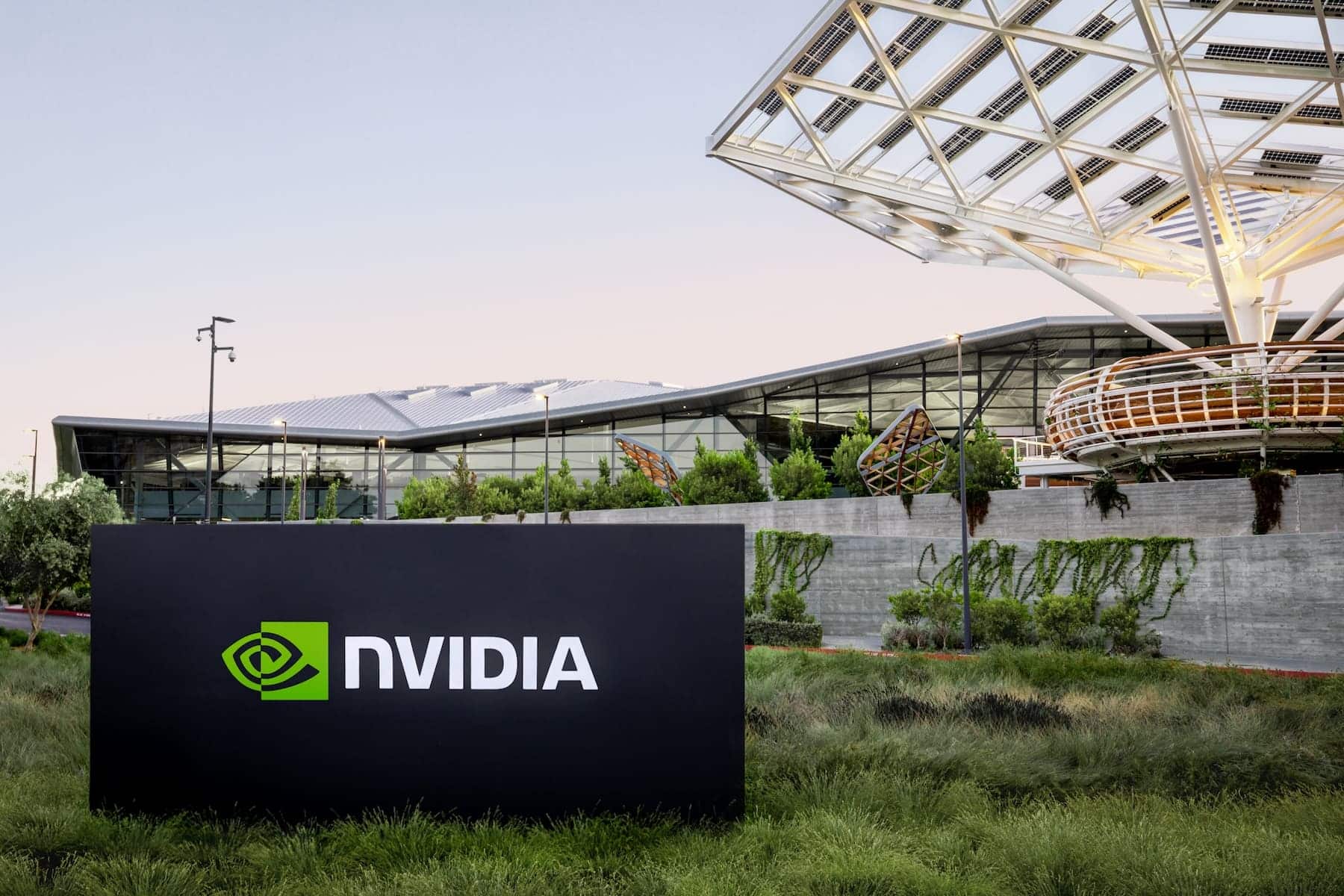Jensen Huang’s company continues its ambitious annual schedule of innovation in artificial intelligence and gaming, strengthening its leadership against competitors that have yet to replicate its success.
The future of large-scale artificial intelligence is already taking shape in semiconductor factories. NVIDIA confirmed during its second fiscal quarter 2026 financial results presentation that its next major technological platform, Rubin, is already in production and will be ready for volume manufacturing in the second half of 2026. This new generation arrives just a year after the massive deployment of Blackwell, demonstrating the annual release cadence the firm has established.
At the same time, the company’s gaming division also posted record numbers: $4.3 billion in quarterly revenue, a 14% increase from the previous quarter and a 49% year-over-year growth, driven by strong demand for Blackwell-based GeForce RTX GPUs.
Rubin: the next big leap in AI supercomputing
During the analyst conference, NVIDIA CEO Jensen Huang revealed details about Rubin, the platform that will succeed Blackwell and aims to define the third generation of rack-scale AI supercomputers based on NVLink.
Rubin will not just be a chip but a comprehensive ecosystem consisting of six key components:
- Rubin GPU, the next-generation graphics core.
- Vera CPU, an in-house processor for AI workloads.
- CX9 SuperNIC, ultra-high-speed network interface cards.
- Spectrum-X, switches for massive scaling in AI networks.
- NVLink 144, the new interconnection switch doubling bandwidth between GPUs.
- Silicon photonic processor, designed for low-latency, high-performance optical communications.
Huang emphasized that Rubin will arrive with a “mature and fully scaled” supply chain, building on the experience of deployments like Hopper and Blackwell. This is a crucial factor: major cloud providers and governments are planning investments in AI factories that could total between $3 trillion and $4 trillion by the end of the decade.
From Blackwell to Rubin: continuity and disruption
The transition to Rubin leverages the success of the current Blackwell Ultra GB300, which is already in full-scale production. NVIDIA explained that approximately 1,000 racks per week based on GB300 are being manufactured, with plans to increase this number in the coming months.

A key to this rapid adoption has been the architectural compatibility between GB200 and GB300, allowing large data centers to migrate seamlessly without complex redesigns. This continuity ensures clients can deploy AI infrastructure smoothly while preparing for the Rubin transition in 2026.
Financial officer Colette Kress noted that “demand for Blackwell Ultra is extraordinary,” and that the company has managed to accelerate production without compromising its supply chain.
Gaming more powerful than ever
While NVIDIA’s recent narrative has been dominated by the AI explosion, gaming remains a strategic pillar. In Q2 2026, the division hit the aforementioned $4.3 billion, propelled by the success of the GeForce RTX 50 series based on Blackwell.
This growth isn’t just hardware-driven; the company has built an ecosystem around its GPUs. Technologies like DLSS (Deep Learning Super Sampling), which uses AI models to enhance graphics performance, and real-time ray tracing support, have become strong selling points for gamers and developers alike.
Additionally, NVIDIA has improved GPU availability after years of shortages, a move that the market has welcomed with record sales figures.
A historic quarter: $46.7 billion in revenue
Overall, NVIDIA reported $46.7 billion in quarterly revenue, confirming its absolute dominance in AI and cementing its position as the fastest-growing tech company today.
While others in the industry struggle to match NVIDIA’s scale, the company continues to expand its market share in key segments: data centers, gaming, professional visualization, and automotive. Data center division still accounts for most revenue, but gaming has regained its relative weight, showing that the company hasn’t neglected its core audience.
Jensen Huang’s vision: gigawatt-scale AI factories
Beyond immediate results, Huang outlined his future vision: “AI factories”, massive facilities combining hundreds of thousands of GPUs, CPUs, and high-speed networks to train and deploy AI models on a global scale.
He estimates the global AI infrastructure market will reach between $3 trillion and $4 trillion before 2030, with Blackwell and Rubin powering this transition.
The NVIDIA CEO expressed enthusiasm: “Rubin will bring a lot of new ideas, and I’m really excited to share them at our next GTC.” The mention of the GPU Technology Conference hints that more technical details about the architecture will be revealed there.
Challenges: sustainability and competition
However, this meteoric growth raises questions. AI data centers require enormous amounts of energy and water for cooling, sparking debates about their sustainability amid climate crises and energy tensions.
Furthermore, while NVIDIA dominates the market, competitors like AMD and Intel are intensifying efforts to avoid falling behind. AMD has made progress with its MI300 GPUs and EPYC CPUs, while Intel seeks relevance with Gaudi and Falcon Shores. Additionally, the RISC-V ecosystem and Chinese developers are exploring local alternatives to reduce dependence on U.S. technology.
An unprecedented bet
What’s clear is that NVIDIA has established a consistent annual innovation cadence reminiscent of Intel’s during the golden era of the Moore’s Law. With Blackwell expanding rapidly and Rubin already in manufacturing, the company demonstrates its R&D machinery and manufacturing capacity are in an exceptional phase of maturity.
The upcoming months will be crucial to see if the transition to Rubin proceeds smoothly like the shift from GB200 to GB300 and if the company can maintain the trust of major cloud providers, which are ultimately its main customers.
Conclusion
NVIDIA is experiencing a historic moment. Its financial results break records, its gaming division is thriving, and its AI roadmap promises to keep it at the forefront of technology through the decade.
The announcement that Rubin is already in manufacturing and that mass production will begin in 2026 marks a significant milestone in the race to dominate global AI infrastructure. For investors, clients, and users, the message is clear: NVIDIA has no plans to slow down.
Frequently Asked Questions (FAQs)
1. What is NVIDIA’s Rubin platform?
Rubin is NVIDIA’s next-generation AI supercomputer platform. It includes six chips: Rubin GPU, Vera CPU, CX9 SuperNIC, Spectrum-X, NVLink 144, and a silicon photonic processor. It will be ready for volume production in the second half of 2026.
2. How does Rubin differ from Blackwell?
Rubin will be the third generation of NVLink rack-scale systems, with improvements in interconnects, networking capacity, and efficiency. While Blackwell is already expanding, Rubin aims at an even larger scale leap.
3. What impact will Rubin have on the AI market?
According to NVIDIA, Rubin and its successors will facilitate building AI factories worth between $3 trillion and $4 trillion before 2030, cementing NVIDIA’s role as the undisputed leader in AI infrastructure.
4. Why did NVIDIA’s gaming revenue grow so much?
Gaming revenue hit a record $4.3 billion thanks to the success of the new GeForce RTX 50 GPUs based on Blackwell and improved stock availability after years of shortages.

